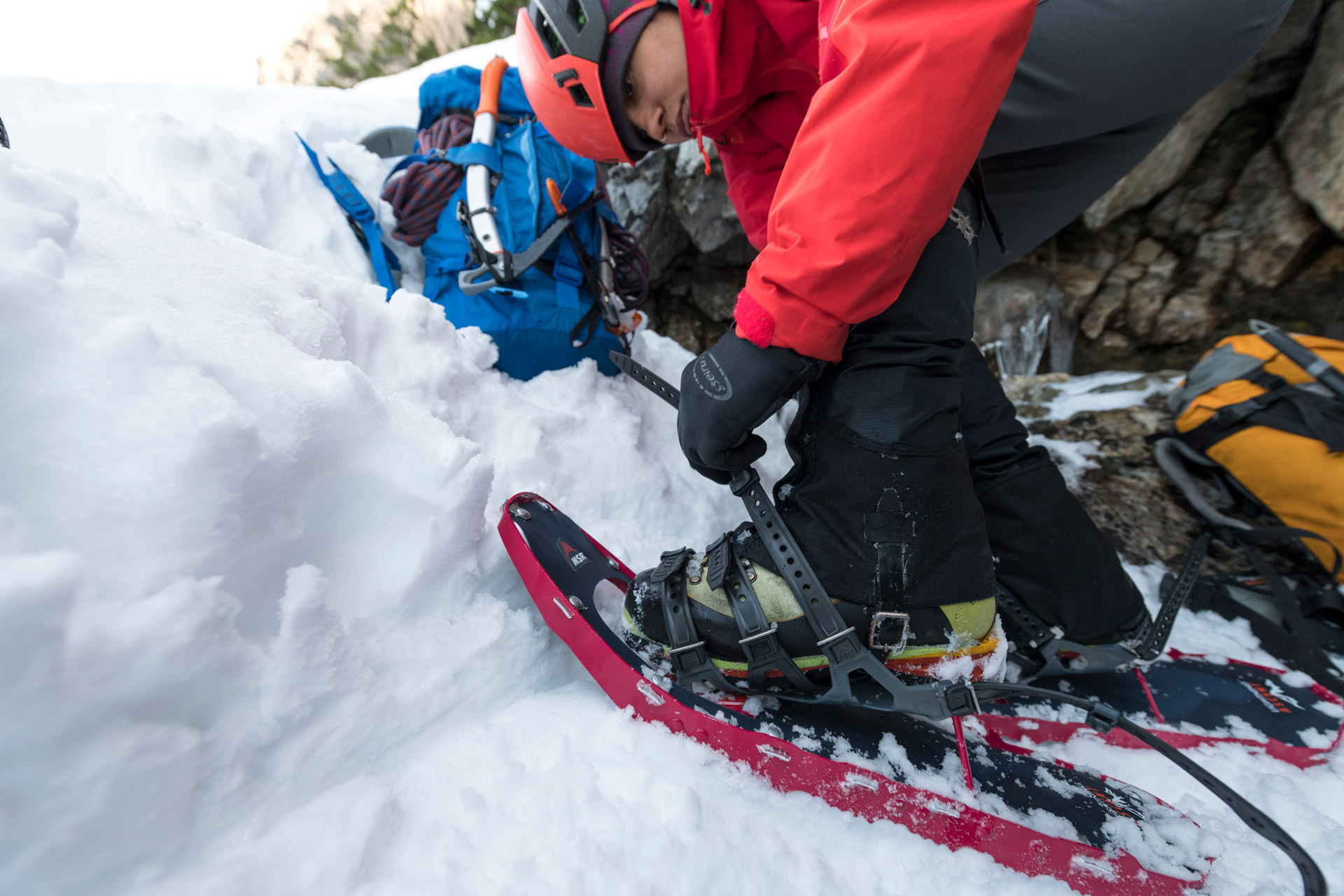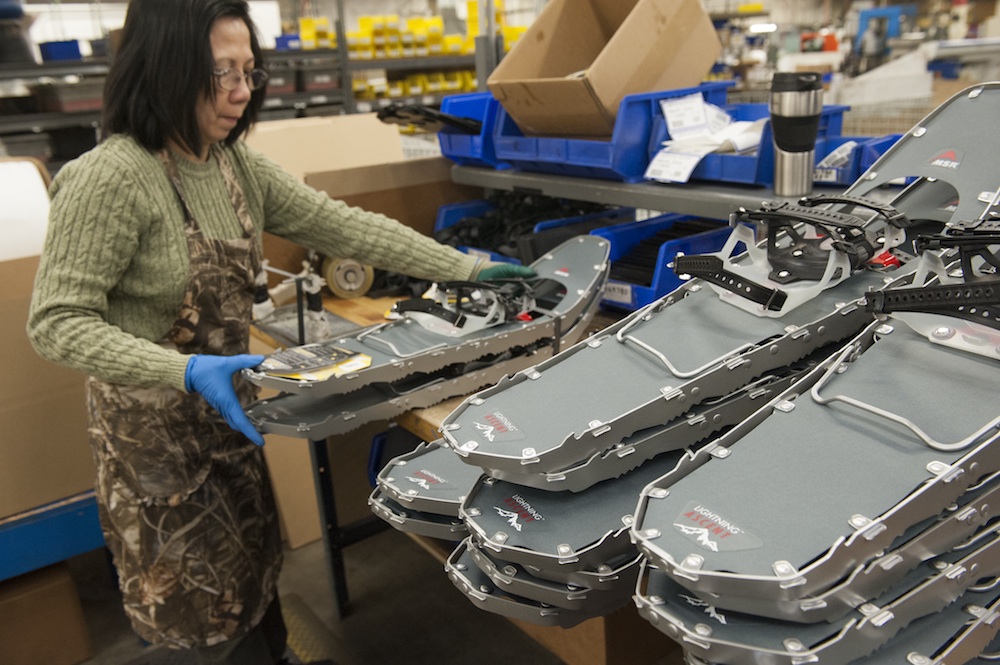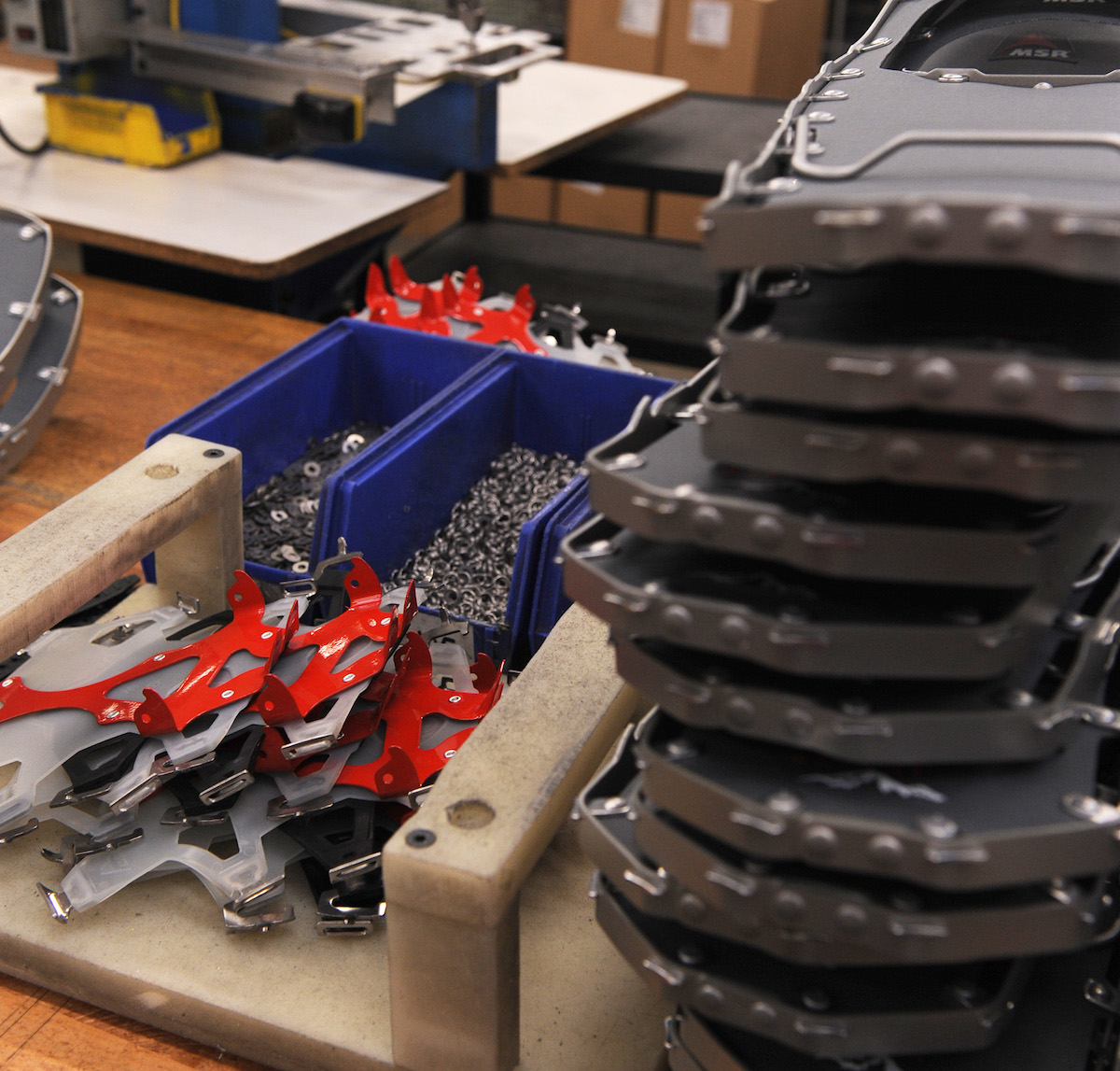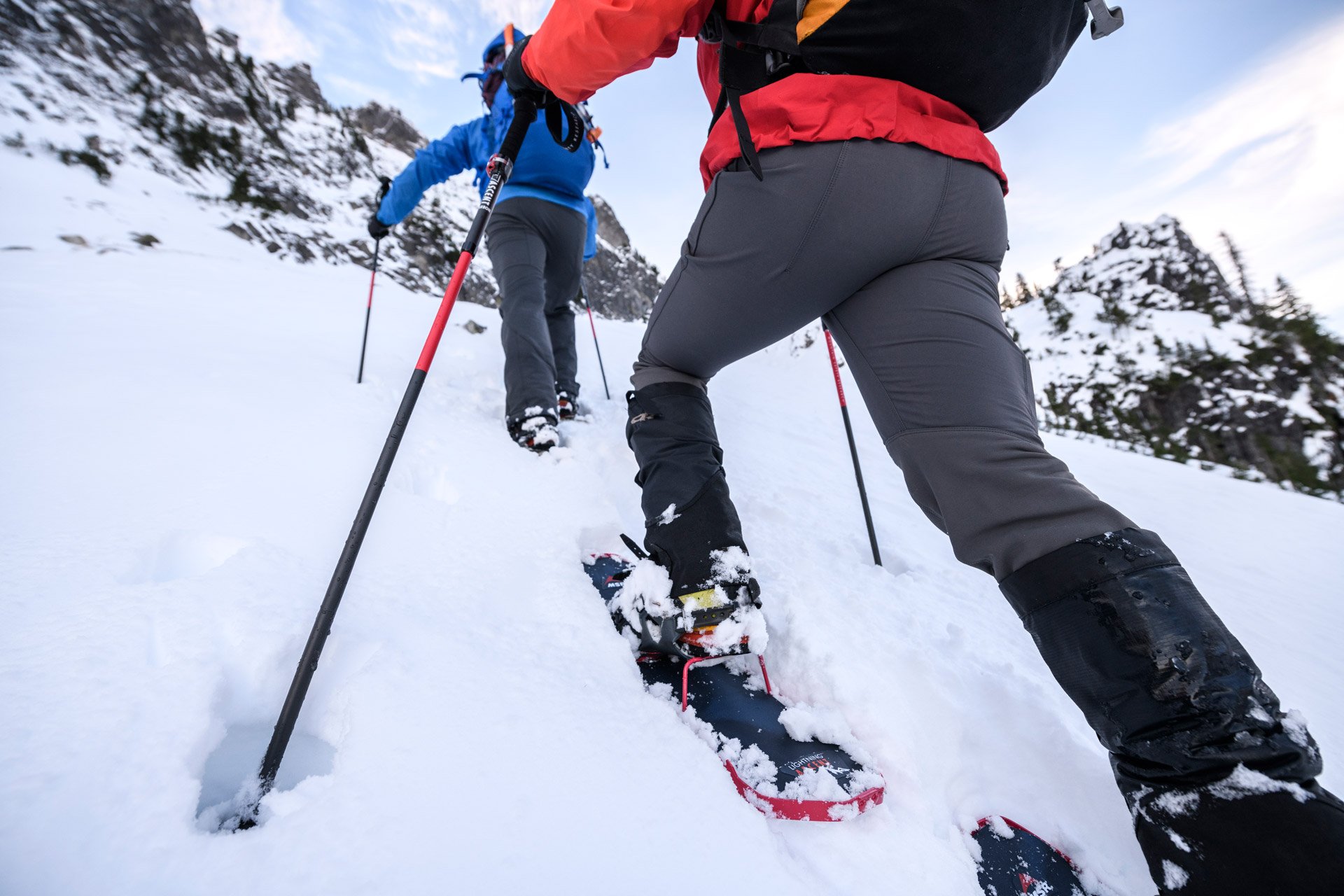Sustainability Report: How do Our Snowshoes Measure Up?
As we work to reduce our environmental footprint at MSR, this is valuable data.
We might not think about it when we’re in the mountains, but each piece of gear that we rely on out there is the sum of many manufacturing inputs, such as raw materials, shipping, processing. Each one of those has its own environmental impact. And when we add them all up, we get a picture of the total impact that product makes on the planet.
As we work to reduce our environmental footprint at MSR, this is valuable data. By mapping it, we can identify hot spots—areas that offer the greatest opportunity to reduce that impact. With that knowledge, we can make informed decisions about the manufacturing process of new and existing products.
Recently, we put our Lightning Ascent Snowshoes under this microscope. Working with students at Yale University’s School of Forestry and Environmental Studies, we conducted a product life cycle assessment (LCA). This process quantifies the environmental impacts produced at each step in the manufacturing process.
The results were surprising, even to us. Here are the key takeaways:

Snowshoes produce far less CO2e emissions than a bike
Our test subject was a pair of the Men’s Lightning Ascent 22 snowshoes. The scope of the analysis was “cradle-to-gate,” which examines all inputs within the footprint of our Seattle factory headquarters as well as our direct supply chain. This includes the extraction of all raw materials, the manufacturing of those materials, all transportation, and the final assembly and packaging of the snowshoes.
After all calculations were complete, we learned that the total estimated impact of the snowshoes was 24.7 kg of carbon dioxide equivalent (CO2e) emissions. For perspective, the manufacturing of a bicycle is estimated to produce 240 CO2e; the Lightning Ascents produce just 10% of that.
This total CO2e number provides us an important benchmark that we can work to reduce.
Next, the students examined each step of the supply chain and manufacturing process to pinpoint those hot spots.
Aluminum production is the biggest culprit
It helps to break up the whole production of a snowshoe into four main categories, allowing us to better locate those hot spots. Using the sophisticated modeling program SimaPro, the students drilled down to identify which manufacturing processes contributed the most to the snowshoes’ total CO2e emissions. Within this model are some stock assumptions provided by the software, which we’re working to fill. Here’s the breakdown of the relative impact each category made to the overall impact.
- Inbound Transportation – 0.2%
- Packaging – 6%
- Manufacturing – 4%
- Materials – 89%
Surprisingly, transportation yielded a nearly insignificant amount of environmental impact relative to the other categories. In addition, our U.S. manufacturing played a key role in keeping the manufacturing impact of the snowshoes low. The largest contributor turned out to be the materials that go into the snowshoes.
So what are those materials and their impact?
- Aluminum – 53%
- Plastics – 35%
- Steel – 12%

Aluminum is used to create the Lightning’s ultralight frame. The production of aluminum had the highest environmental impact in carbon dioxide emissions and human health impacts. This is largely due to the impacts of mining the coal used in the extraction of aluminum.
Currently MSR uses aluminum that contains typically 75-85% recycled content, but that percentage is difficult to control and varies by batch. Using greater amounts of recycled aluminum could substantially reduce the snowshoes’ environmental impact. Therefore, our team is exploring ways to ensure there is always a minimum percentage of recycled content in our aluminum.
For the rest of the snowshoe, high-performance TPU plastic is used in the bindings and on the decking due to its incredible durability and freeze-proof properties. And finally, hardwearing martensitic steel is used for such components as the rivets, clips and beefy crampons.

U.S. manufacturing provides a big advantage
While we acquire the raw materials and a few parts from global suppliers, the majority of the Lightning Ascents are manufactured right here in our Seattle factory, including the toothy frames, the crampons, and even the tooling to make those parts.
Because they’re manufactured domestically, our snowshoes’ environmental footprint is much lower than that of snowshoes made in China because our manufacturing is cleaner. In fact, the LCA revealed that snowshoes built of the exact same materials made in China contribute an estimated 77% more CO2e emissions than those made in the U.S.
Manufacturing in the U.S. offers other advantages. Here in Seattle, 97.5% of the energy used by MSR’s headquarters and factory comes from renewable energy sources and 100% of our electricity usage has been carbon neutral since 2005. In addition, our production lines provide hundreds of US jobs, and we’ve built social accountability and environmental responsibility into our operations.
The MSR factory follows lean manufacturing principles to minimize waste and recycles all scrap materials, including aluminum and steel. And we aspire to be a zero waste facility, which we’re actively exploring.
Needless to say, it’s pretty neat to walk through a buzzing factory each morning and think about the positive effects.
This data can help drive decisions
So what do we do with the findings of an LCA? The whole goal is to highlight the opportunities for reducing our environmental impacts. With that information, we can make informed decisions about things like material choices, suppliers, production processes and packaging solutions.
Actions are already being put in place. For example, in 2019, we’ve decided to create an innovative snowshoe component in the U.S. rather than use a global (more affordable) supplier for the part.
Building gear to last matters

Conducting an LCA is a critical step toward reducing our impact. But this LCA is just one of MSR’s sustainability efforts. Since our founding in 1969, we’ve engineered our gear for long-term durability and easy reparability, all to keep it in use as long as possible and out of landfills.
Our Seattle Repair Shop is a big part of that mission. If you need your Lightning Ascent snowshoes worked on, bring them by and we’ll get them back to working order. That way, their only environmental footprints going forward will be those you leave in the snow.

